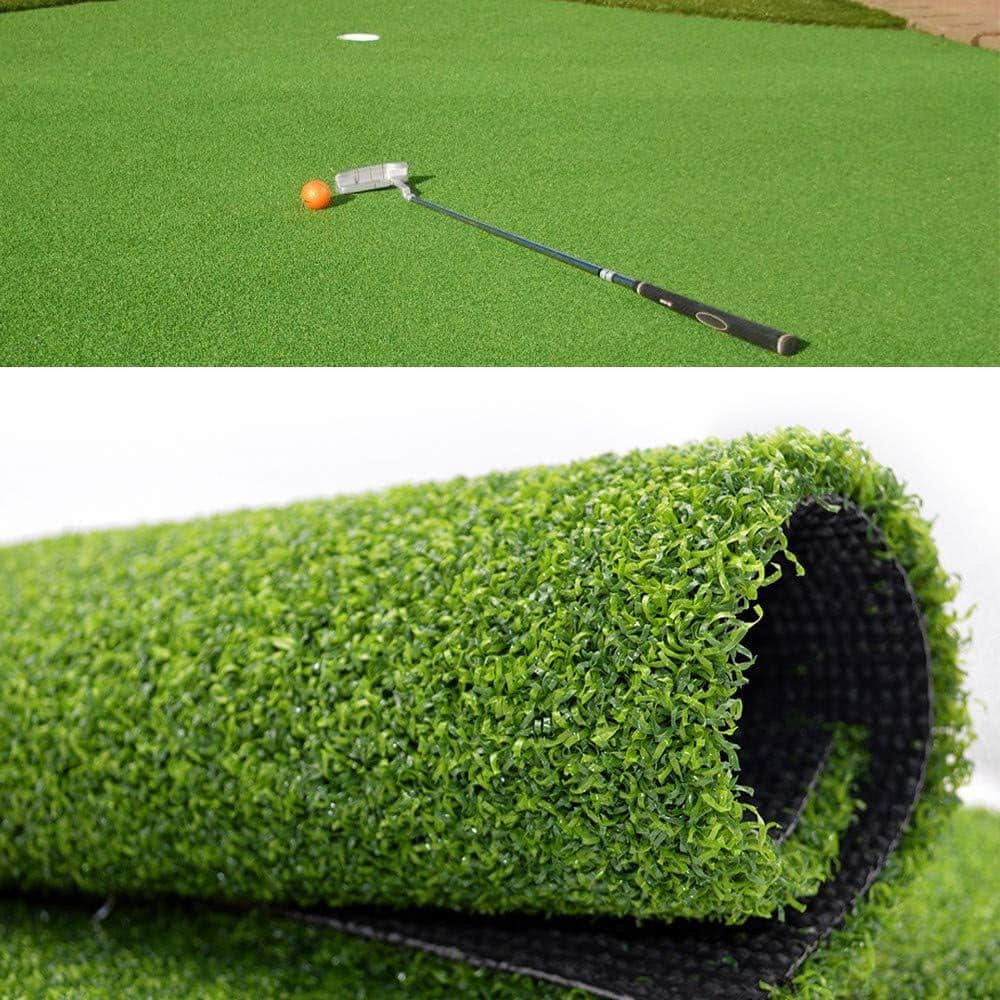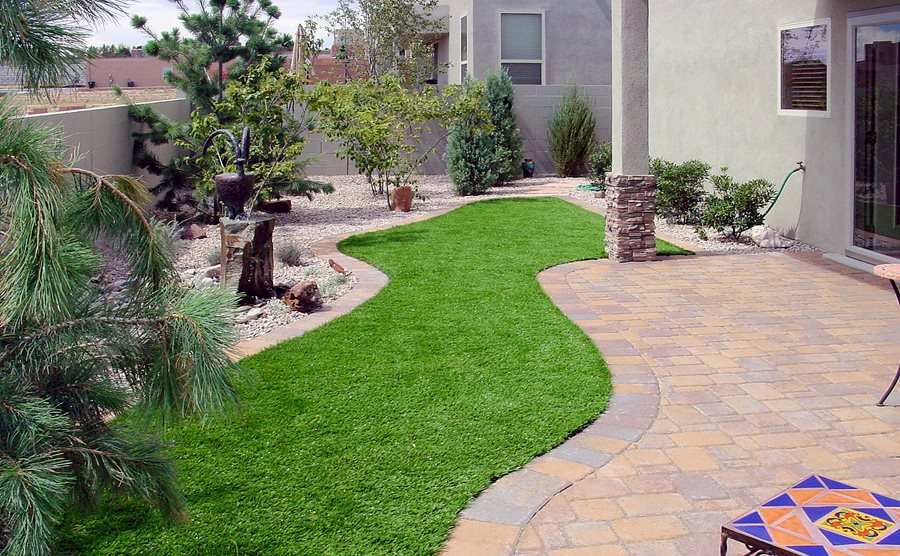Look Into the Environmental Perks of Opting for Artificial Grass Solutions
The adoption of synthetic grass services offers a compelling possibility to attend to pressing ecological difficulties. By considerably lowering water use and minimizing the application of harmful chemicals, these choices not only advertise sustainable landscape design but additionally safeguard local ecological communities. Furthermore, the reduced carbon footprint connected with reduced upkeep activities adds to a more lasting approach to land administration. The ramifications of these advantages extend beyond simple preservation initiatives, raising concerns concerning their lasting impact on habitat preservation and total eco-friendly balance. Exploring these dimensions exposes an intricate interaction worth considering.
Water Conservation Benefits
One of the most substantial advantages of fabricated lawn is its capability to conserve water. In comparison, man-made turf does not require watering, substantially decreasing the general demand for water sources.
By getting rid of the demand for routine watering, artificial grass adds to sustainable landscape methods and helps reduce the ecological impact of extreme water intake. Furthermore, the preservation of water extends to the reduction of drainage, which can lead to soil disintegration and river pollution.
Additionally, the installation of man-made lawn allows homeowners and towns to designate water sources extra efficiently, concentrating on vital usages such as alcohol consumption water and farming. The change in the direction of fabricated turf not only promotes liable water usage but also lines up with wider environmental objectives focused on maintaining natural deposits.
As neighborhoods progressively focus on sustainability, the water preservation advantages of man-made grass provide an engaging situation for its adoption in domestic and industrial landscaping projects.
Lowered Chemical Use
The change to synthetic grass substantially reduces the reliance on chemical treatments commonly made use of in all-natural lawn maintenance. Conventional turf management typically entails the application of chemicals, herbicides, and plant foods to promote growth and control parasites. These chemicals can present dangers to human health, neighborhood wild animals, and the environment, adding to soil and water contamination.
In contrast, fabricated turf removes the need for these dangerous substances. By lessening the launch of synthetic compounds right into the ecosystem, man-made lawn promotes healthier dirt and water systems.
Moreover, the absence of chemical drainage associated with synthetic lawn installations assists secure neighborhood waterways from contamination, sustaining marine life and maintaining biodiversity. Turf installation phoenix az. As neighborhoods significantly focus on lasting practices, choosing man-made lawn offers a viable service that lines up with environmental preservation objectives. Via this change, home proprietors can delight in rich environment-friendly rooms without endangering environmental health and wellness, paving the method for a much more lasting future
Reduced Carbon Footprint

Moreover, the installment of synthetic grass can result in substantial water conservation. Natural yards need substantial quantities of water for watering, which not just includes in the carbon impact related to water removal and therapy yet additionally pressures neighborhood water sources. In comparison, synthetic grass requires minimal maintenance, requiring no watering, thereby considerably decreasing water use and its associated power prices.
Additionally, the durability of man-made grass contributes to its decreased carbon impact. With a lifespan of up to 15 Go Here years or even more, the demand for regular replacements is decreased, resulting in less waste and reduced power usage in manufacturing and throwing away standard turf alternatives. Overall, fabricated grass provides a sustainable alternative for ecologically mindful landscaping.
Environment Preservation
Habitat conservation is a vital consideration in the discussion over landscape design choices, specifically when contrasting synthetic lawn to natural grass. All-natural turf yards commonly need extensive upkeep, click here for info including making use of pesticides, plant foods, and herbicides, which can detrimentally impact neighborhood environments. These chemicals can seep into the dirt and rivers, damaging native plants and fauna and interrupting neighborhood habitats.
In comparison, synthetic grass presents a chance to reduce the eco-friendly footprint of landscaping. By selecting synthetic lawn, homeowners can lessen the disturbance of natural habitats linked with traditional yard treatment techniques. Synthetic grass removes the need for damaging chemicals, therefore protecting close-by wildlife and keeping the integrity of surrounding environments. Furthermore, the setup of synthetic grass can lead to the conversion of former lawn locations right into even more biodiverse landscapes, such as pollinator yards or indigenous plant locations, which can sustain local wildlife.
Ultimately, the transition to artificial lawn not only saves water and decreases maintenance initiatives yet also fosters a more unified connection between human activities and the all-natural atmosphere, promoting environment conservation while doing so.
Long-Term Sustainability
Long-term sustainability is a crucial variable in examining the advantages of synthetic grass over standard turf yards. One of the most substantial benefits of synthetic grass is its sturdiness; it can last up to 15-20 years with marginal maintenance, whereas all-natural turf calls for regular reseeding and replacement. This durability reduces the demand for constant sources, such as water, fertilizers, and chemicals, which are important for keeping a healthy yard lawn.
In addition, synthetic lawn adds to a decrease in carbon emissions connected with grass care tools. Conventional grass frequently call for gas-powered mowers, trimmers, and blowers, every one of which add to air pollution. Phoenix turf companies. In contrast, synthetic grass eliminates the requirement for such tools, promoting a cleaner atmosphere
Additionally, the manufacturing of synthetic grass significantly utilizes recycled materials, enhancing its sustainability profile. As producers take on environmentally friendly techniques, the ecological footprint of synthetic grass proceeds to lessen.

Final Thought
The adoption of man-made turf options provides substantial ecological benefits, consisting of substantial water preservation, minimized reliance on harmful chemicals, and a lower carbon footprint. In addition, synthetic grass help in maintaining natural environments by decreasing land disruption and advertising long-lasting sustainability through using durable products. Jointly, these variables emphasize the potential of synthetic grass to add favorably to ecological health and supply a practical choice to conventional landscape design methods in a significantly resource-conscious globe.
In contrast, synthetic grass does not require watering, significantly decreasing the total need for water sources. By minimizing the click this site release of synthetic compounds into the environment, fabricated lawn advertises healthier soil and water systems.
Additionally, the setup of synthetic grass can result in considerable water preservation. In comparison, man-made grass requires very little maintenance, needing no watering, consequently substantially minimizing water use and its linked energy expenses.
